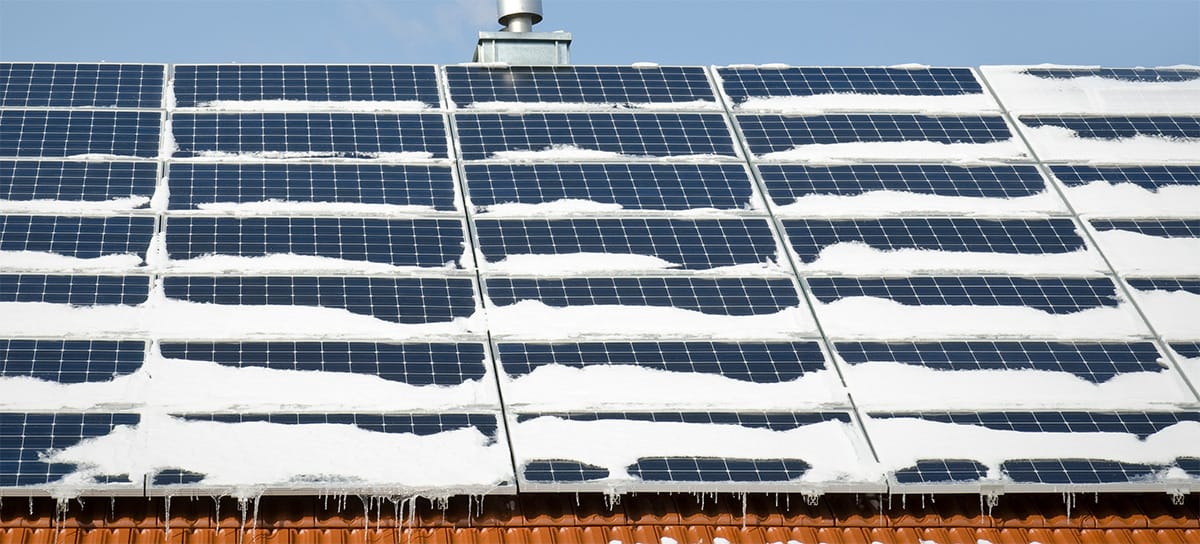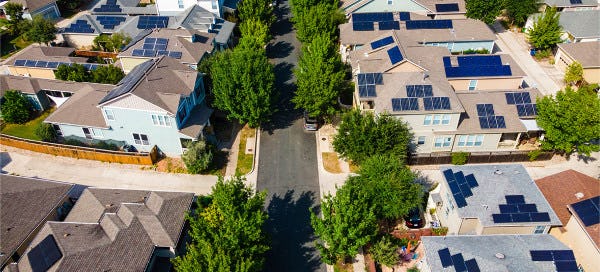Solar panels work by using the sun's light and heat to generate solar energy. Installing solar panels on your home is a great way to save money on your electricity bill while also reducing your carbon footprint. While you reap major benefits from your solar panels in the summer, what about during the winter months when the sun isn't as prevalent? If you live in a warm state like Texas, you'll likely capture a good amount of sun during the winter months as well. As winter weather makes it way to your home, you may be wondering how to prepare your solar panels for winter. In this article, we're going to cover just that.
Change the angle of your solar panels
Did you know that the sun is lower during the winter than the summer? For optimum performance your solar panels should directly face the sun. This will require your panels to sit on a steep angle in the winter to help capture more sunlight. By adjusting the angle of your solar panels you can increase your solar system's energy production. Another benefit is that the sharp angle of your solar panels will help snow fall off of them more easily.
Insulate your solar batteries
Solar panel batteries are not designed to work in frigid cold temperature and have an optimal temperature range (you can find this information in your owner's manual). Most solar batteries lose about 10% of their rated capacity for every 15-20 degrees below 80°F as measured in the cells. A great way to prepare your solar panels for winter is to insulate your outdoor solar batteries or to keep them inside. If you have lead acid batteries, note that they can freeze at below-zero temperatures.
To maximize your home's solar battery storage you'll want to make sure they are located in a space that is protected from the elements. The most popular place to store solar batteries is in your garage or home.
Keep an eye on your battery discharge levels
If you are supplementing your solar energy system with battery storage, you'll want to evaluate your battery's depth of discharge (DoD). Every solar battery has a certain capacity. A battery's capacity is the amount of electrical energy supply the battery has to offer, expressed in kilowatt-hours (kWh). Your battery's discharge level is the percentage of the battery that has been discharged relative to the battery's full capacity. For example, if you have a 8 kWh battery and you discharge 6 kWh, your battery's discharge would be 75%.
Keeping an eye on your battery discharge levels is one of the best ways of maintaining solar panels. It influences solar battery health and ensures you are using your battery bank properly.
Remove excess snow from solar panels
Light snowfall on your solar panels isn't necessarily a bad thing, but it can have an impact on how much sun your panels are able to capture. If your home experiences heavy snowfall you'll want to remove the snow as best you can from your solar panels with a soft snow brush.
Maximize your backup generator through spare batteries
If you have invested in a solar backup generator to provide you with solar power when the power goes down, you'll want to ensure your generator is ready to use well before the snow starts to fall. Don't just store your generator in a dark closet until you need it. This doesn't guarantee that the battery is fully charged. You may also want to purchase a spare battery or two for your generator as well to ensure you have power when you need it.
We hope you feel well equipped with these tips on how to prepare your solar panels for winter. If you live in Texas and already have a solar energy system installed on your home, consider signing up for a solar buyback plan from Rhythm. Don't have solar panels installed but want to use solar energy in your home? We offer solar electricity plans that utilize the power of the Texas sun to power your home.




